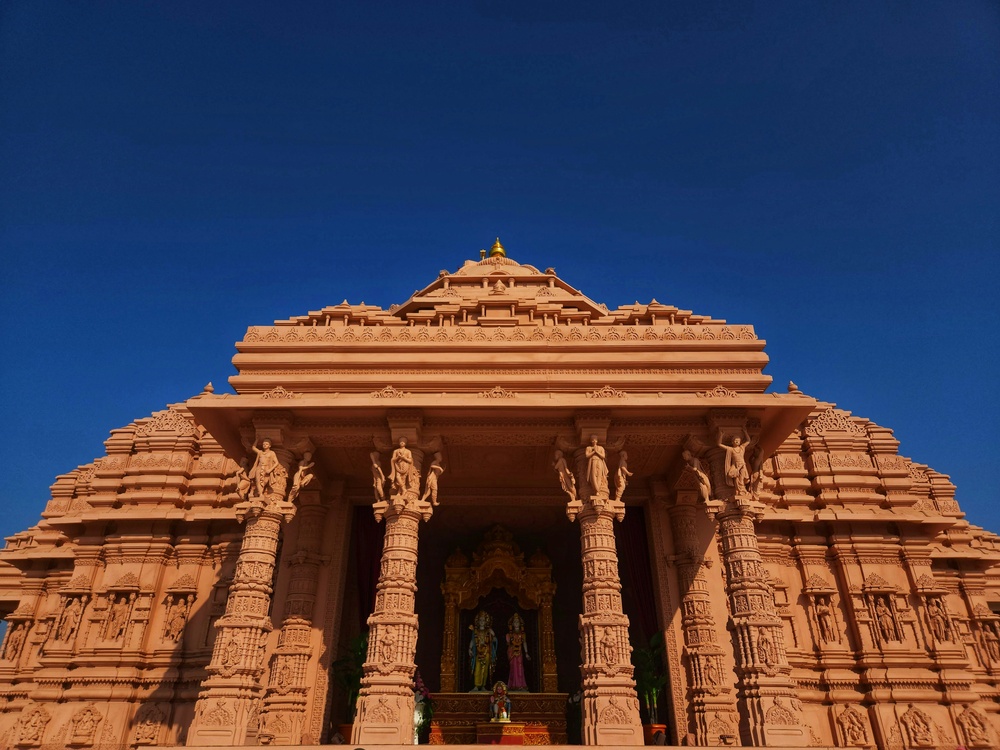Ayodhya, the ancient city on the banks of River Sarayu in Uttar Pradesh, holds an unbreakable bond with India’s spiritual and historical heritage. Known as the birthplace of Lord Rama, Ayodhya is a timeless destination for pilgrims, heritage travellers, and culture enthusiasts. If you are planning to explore this sacred city, here is a complete guide to the best places to visit in Ayodhya to enrich your journey with faith, history, and peace.
1. Ram Janmabhoomi Temple
Your journey to Ayodhya begins with the holiest of all – the Ram Janmabhoomi Temple, believed to be the birthplace of Lord Rama. The grand temple under construction promises to be an architectural marvel showcasing intricate carvings, Vedic designs, and immense spiritual energy. Pilgrims from all over India visit to seek blessings and witness rituals that revive the Ramayana era, making it one of the most revered places to visit in Ayodhya.
2. Hanuman Garhi
Located close to Ram Janmabhoomi, Hanuman Garhi is a prominent temple dedicated to Lord Hanuman. To reach the shrine, devotees climb about 76 steps. The temple houses a unique idol of Hanuman ji with Maa Anjani on his lap. It is believed that a visit to Ram Janmabhoomi is incomplete without first seeking blessings at Hanuman Garhi, making it a must-visit for every pilgrim.
3. Kanak Bhawan
Kanak Bhawan, also called Sone ka Ghar, is a beautiful temple dedicated to Lord Rama and Goddess Sita. According to legends, it was gifted to Goddess Sita by Kaikeyi after her marriage. The temple’s golden idols and intricate interiors make it one of the most mesmerising places to visit in Ayodhya for devotees as well as architecture enthusiasts.
4. Nageshwarnath Temple
Nageshwarnath Temple, dedicated to Lord Shiva, is one of Ayodhya’s oldest temples. It is believed to have been established by Kush, son of Lord Rama. The temple is especially vibrant during Mahashivratri, with grand celebrations and thousands of devotees visiting to offer prayers and seek blessings.
5. Treta Ke Thakur
Treta Ke Thakur is a historically significant temple that houses idols of Lord Rama, Sita, Lakshmana, Bharat, Shatrughna, and Hanuman sculpted from a single black stone. The temple stands at the site where Lord Rama is believed to have performed the Ashwamedha Yagna. It opens to the public only once a year on Ekadashi, but its architecture and legends make it a landmark.
6. Sita ki Rasoi
Near Ram Janmabhoomi lies Sita ki Rasoi, believed to be the kitchen used by Goddess Sita. Today, it is a small temple showcasing ancient kitchen utensils and structures. Devotees believe offering food here brings prosperity and harmony at home, making it a unique and blessed place to visit in Ayodhya.
7. Guptar Ghat
Guptar Ghat is a peaceful ghat on the banks of River Sarayu, believed to be the site where Lord Rama took Jal Samadhi to leave his earthly life. The ghat is perfect for meditation, photography, and evening aarti. Pilgrims take holy dips here, believing it purifies the soul and washes away sins.
8. Mani Parbat
Mani Parbat is a small hillock believed to be part of the Sanjeevani Mountain carried by Lord Hanuman. A temple sits atop the hill, offering panoramic views of Ayodhya city. It is ideal for those who seek spiritual stories intertwined with natural beauty and a sense of calm.
9. Tulsi Smarak Bhawan
Tulsi Smarak Bhawan is dedicated to the revered poet-saint Goswami Tulsidas, who composed the Ramcharitmanas. The complex includes a museum, library, and research centre on his life and works. Regular Ramleela performances and discourses held here offer a deep cultural insight, making it an educational place to visit in Ayodhya.
10. Ramkatha Park
Ramkatha Park is an open-air cultural space near the Sarayu riverfront, developed for devotional performances and cultural events. The amphitheatre hosts Ramleela, classical music, and bhajans, especially during festivals like Ram Navami. It is a peaceful spot to relax, walk, and absorb Ayodhya’s spiritual ambience.
Why Visit Ayodhya?
Ayodhya is more than temples; it is the living soul of India’s epic heritage. Each street, temple, and ghat carries stories from the Ramayana, blending faith and culture seamlessly. Visiting these places to visit in Ayodhya connects you to centuries-old traditions, architectural marvels, and India’s deepest spiritual philosophies.
Travel Tips
✅ Best time to visit: October to March for pleasant weather and festive celebrations like Diwali and Ram Navami.
✅ Dress code: Modest clothing is recommended while visiting temples.
✅ Connectivity: Ayodhya is connected via Ayodhya International Airport, Lucknow Airport (140 km), and railways from major Indian cities.
✅ Accommodation: Options range from budget dharamshalas to mid-range hotels near the temple areas.
✅ Food: Relish traditional vegetarian North Indian meals served at local restaurants and temple kitchens.
Conclusion
Whether you are a pilgrim seeking blessings, a historian exploring ancient heritage, or a traveller immersed in India’s spiritual depth, Ayodhya welcomes you with open arms and divine grace. This complete guide to the best places to visit in Ayodhya will ensure your journey is meaningful, peaceful, and spiritually uplifting.


